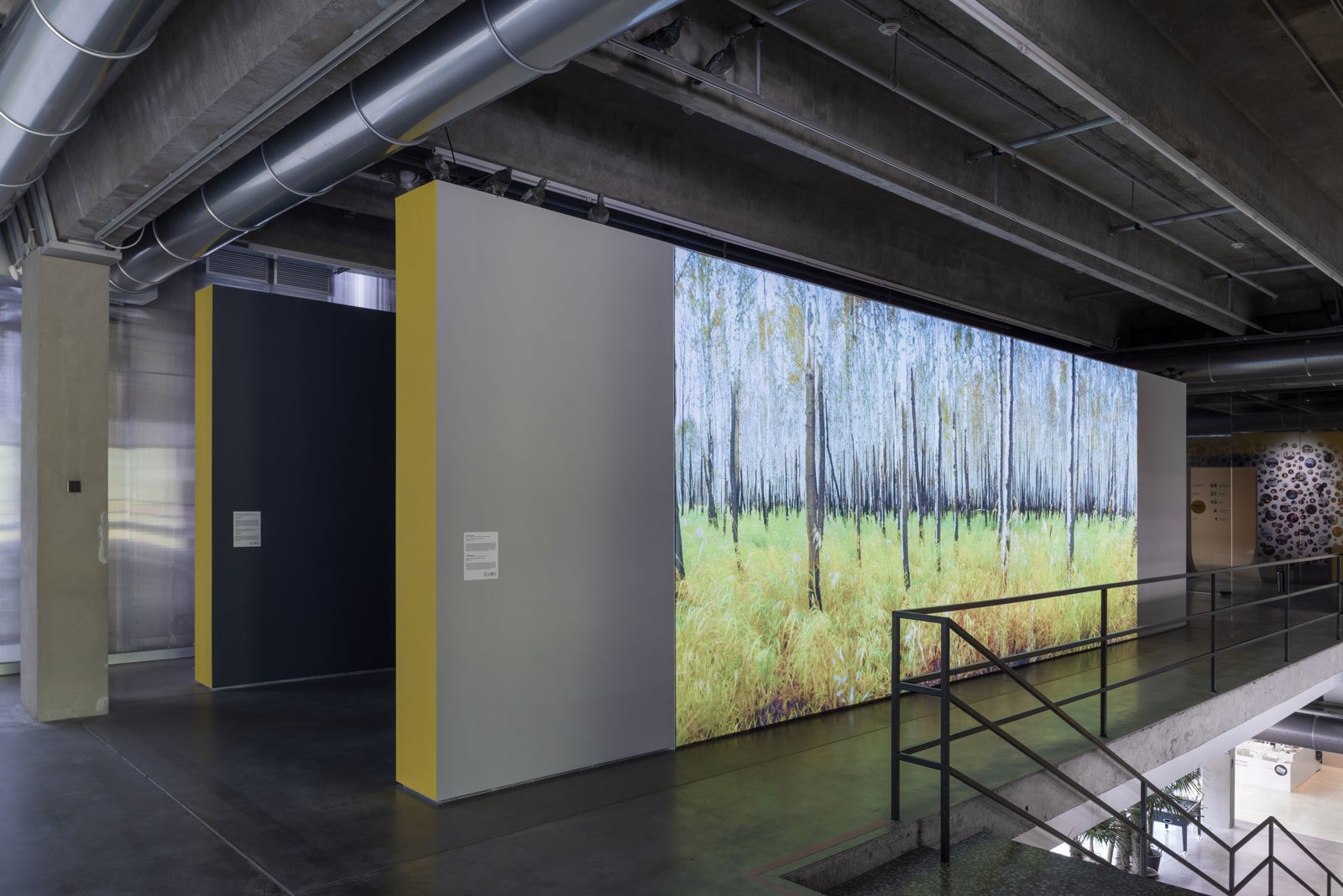Denis Sinyakov
b. 1977, Obninsk, Kaluga Region. Lives and works in Moscow

Landscape with Birches, Buryatia, October 4, 2018, 2019
Lightbox, 298 x 720 x 10 cm
Courtesy of the artist
The image of a charred birch forest is as beautiful as it is disturbing. The even light on a cloudy day, the damp autumnal air, nature getting ready to fall asleep for the winter—this landscape looks almost metaphysical, as if untouched by humans. But the dramatic charring on the trees is there to remind us that forest fires are usually not natural disasters but of anthropogenic origin, i.e. they are often caused by human activities. In 2015, Baikal Nature Reserve in Buryatia, close to where these pictures were taken, lost 43,000 of its 70,000 hectares of forest and, according to expert predictions, the damage will not be repaired for decades.
According to Greenpeace, which based its estimate on official figures and satellite images, in 2018 fires affected 14–15 million hectares of Russian forests, an area twice the size of Ireland. As most of the fires took place in areas that are difficult to reach, no attempts were made to extinguish them. Because they are far away, such disasters often remain invisible or seem of little importance. As the rest of the world is beginning to understand the ecological catastrophe it is facing, Russia remains, in the collective imagination of its people, a nature reserve of clean lakes, dense forests, and ample natural resources.